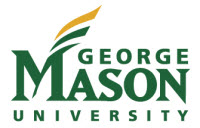Below is a summary of the abstract you submitted. Presenting author(s) is shown in bold.
If any changes need to be made, you can modify the abstract or change the authors.
You can also download a .docx version of this abstract.
If there are any problems, please email Dan at dar78@pitt.edu and he'll take care of them!
This abstract was last modified on March 18, 2024 at 3:07 p.m..

The bacteriophage, Hortihabitatio, was isolated from host Gordonia rubripertincta NRRL B-16540. Consequently, the bacteriophage was visualized, sequenced, and analyzed. Bacteriophage Hortihabitatio was isolated from a garden soil sample (38.79869 N, 77.3121 W) via an enriched isolation and a spot test. Next, the phage was purified through serial dilutions and plaque assays. After the phage was purified to a single plaque morphology, it was amplified via plate flooding to create phage lysates. After adequate amplification, which was verified by calculations of titer, the DNA was isolated and analyzed utilizing restriction enzyme digestion and visualized via gel electrophoresis. In addition to DNA isolation and analysis, the bacteriophage was visualized utilizing transmission electron microscopy. Illumina sequencing of phage Hortihabitatio at the Pittsburgh Bacteriophage Institute revealed a genome length of 59,850 base pairs with a cluster characterization of DJ. Phamerator comparative genomic analysis has shown characteristic repetitive DNA sequences dispersed throughout genomes of the same cluster. The repetitive DNA sequences will be located, identified, and analyzed for alignment.

